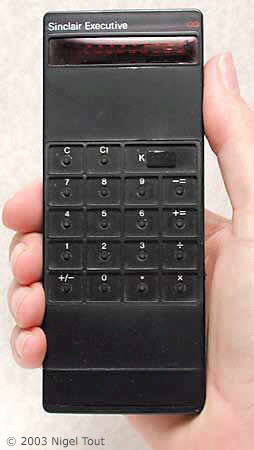"Sinclair in his quest for miniaturisation, to produce a true pocket calculator, wanted to use button cells rather than normal batteries, but these would be drained in minutes by the chip and the LED display. However, Chris Curry and Jim Westwood...found that the power to the chip did not have to be on continuously, it could be pulsed and the internal capacitance of the chip would store enough electrical charge to keep it working till the next power pulse. Power pulses lasting 1.7 microseconds are used, at a frequency of 200 KHz during calculations and 15KHz between each operation, reducing the power consumption to 25 to 30 mW. Texas Instruments did not recommend operating in this way, but it allows the Executive to get about 20 hours continuous operation from 3 small mercury button cells."
http://www.vintagecalculators.com/html/sinclair_-_the_pocket_calculator.html
